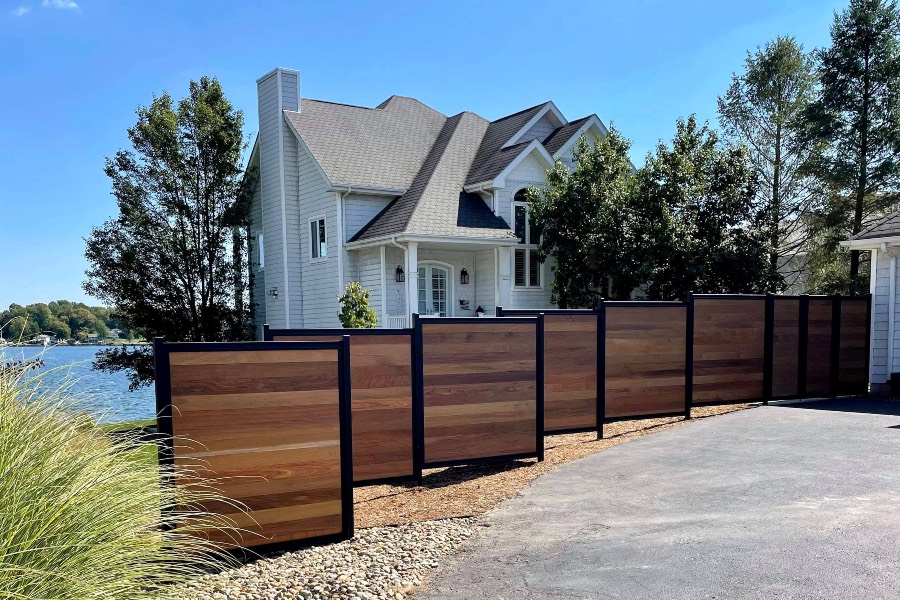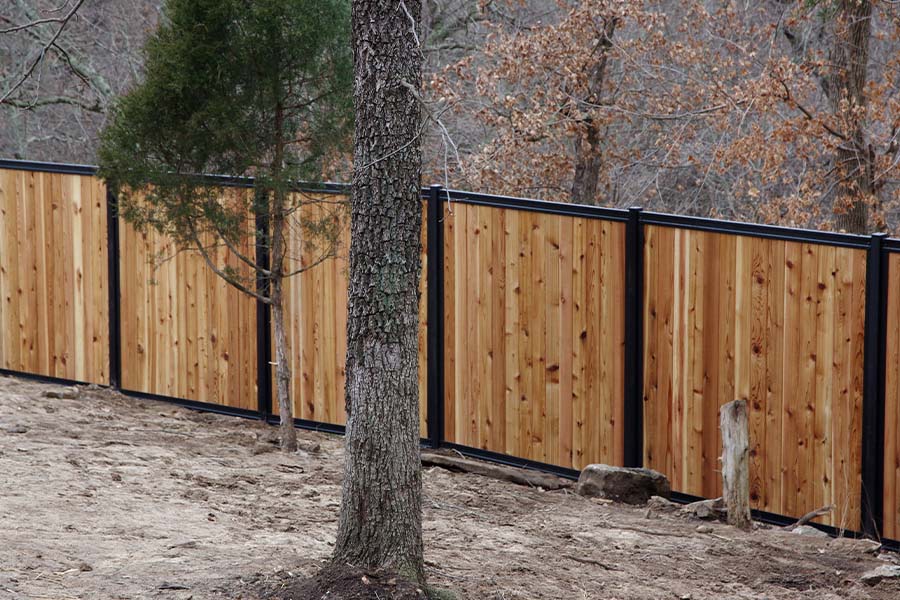Featured

As sustainability comes to be a growing concern for businesses and property owners, the need for green building materials encompasses exterior areas, including fencings. Typical secure fencing materials such as timber, plastic, and metal can have substantial environmental impacts, from logging to chemical treatments and plastic waste. There are numerous green secure fencing alternatives readily available that not only reduce the carbon footprint but also supply toughness and aesthetic charm. Allow's explore some of one of the most sustainable and popular secure fencing materials that can aid you go eco-friendly while still enhancing your building's style, safety, and personal privacy.
- Bamboo Fence. Bamboo is one of one of the most sustainable products on the market, and it is significantly used in fencing building as a result of its fast development and stamina. Unlike wood trees, bamboo is a lawn that can grow back completely within simply a few years, making it extremely renewable. It's normally resistant to insects and rot, which means it does not need severe chemicals or therapies, making it an environment-friendly option.

Advantages: Bamboo fences are long lasting, low-maintenance, and naturally degradable. They are naturally immune to termites and wetness, lowering the requirement for chemical preservatives. Furthermore, bamboo helps decrease dirt disintegration as a result of its deep origin systems. Factors to consider: Bamboo can be extra expensive than some typical timber fencing options, and it might not appropriate for locations with severe cool or freezing temperature levels, as it can come to be brittle over time. 2. Recycled Products Secure Fencing. Lots of makers now supply fencings made from post-consumer plastic, recycled timber, or also repurposed metal. Several composite products, for instance, are made from recycled plastic bottles, timber scraps, and various other materials that would certainly or else be thrown out.
Conveniences: Recycled product fencings help preserve natural deposits, decrease contamination, and reduced the environmental effect of the manufacturing procedure. They can also supply outstanding toughness, resisting decay, mold, and termites. Considerations: While recycled product fencings are eco-friendly and very sturdy, they might not have the same natural visual that some homeowners seek. Nevertheless, producers now offer designs that mimic the look of wood or stone. 3. Compound Secure fencing. Composite secure fencing is made from a blend of timber fibers and plastic, often including recycled materials. This mix creates an extremely sturdy, low-maintenance fence that does not call for normal paint or discoloration, making it a lasting alternative. Compound fences are immune to rot, pests, and weathering, which indicates they can last for years without the requirement for regular replacements.

Advantages: Composite fencings are long-lasting and can stand up to harsh weather, decreasing the need for substitutes or fixings. Because composite materials typically include recycled content, they help in reducing plastic waste. Furthermore, they do not call for harmful chemicals or treatments. Considerations: Compound fences can have a greater upfront price than conventional wood or plastic, though their sturdiness and minimized maintenance prices commonly make them an extra economical option over time. 4. Living Fencings. Living fencings, additionally called hedgerows, are a green and visually pleasing alternative that entails planting dense shrubs, trees, or climbing up plants along your property line to create a natural obstacle. Popular plants for living fences include boxwood, privet, and holly. These plants can be grown to give personal privacy, windbreaks, and noise decrease while adding to ecological health and wellness.
Perks: Living fences advertise biodiversity, improve air top quality, and soak up co2, making them one of the most environment-friendly fence choices. They additionally give an all-natural habitat for bugs and birds and can lower environmental pollution and aid regulate temperatures in your lawn. Factors to consider: Living fencings require routine upkeep, such as trimming, watering, and sometimes pest control. They additionally take time to establish and may not supply immediate privacy compared to strong timber or plastic fencings. 5. Cedar and Redwood Fence. Cedar and redwood are prominent all-natural wood alternatives for fences. These products are normally immune and sturdy to rot, insects, and wetness, which implies they normally don't call for making use of harmful chemical treatments. When sourced from sustainably handled forests, cedar and redwood fencings can be an eco-friendly choice that provides both elegance and longevity.
Conveniences: These woods are biodegradable, eco-friendly, and deal outstanding longevity and all-natural beauty. Cedar and redwood likewise have a reduced ecological effect when harvested sensibly, making them an environmentally friendly selection for several property owners. Considerations: While cedar and redwood fencings have ecological benefits, they do still require occasional upkeep and are much more pricey than various other timber choices. It is very important to ensure that the wood is sourced from sustainable forests to maximize its environmental advantages. 6. Rock and Brick Secure Fencing (Redeemed) Rock and brick fences are low-maintenance and exceptionally durable, and they can be environmentally friendly when made from redeemed products. Recovered stone and brick are frequently salvaged from old structures or construction tasks, reducing waste and saving natural resources. These materials supply a timeless appearance and are very resistant to weathering, making them a long-lasting service for fencing.
Conveniences: Recovered rock and block are long lasting, aesthetically pleasing, and call for very little upkeep. By repurposing these materials, you aid lower the need for brand-new sources and decrease waste in garbage dumps. Factors to consider: The installment of rock and block fences can be labor-intensive and extra expensive compared to various other materials, however their durability and reduced maintenance needs can make them cost-effective in the future. Verdict. Eco-friendly fencing alternatives are not only excellent for the atmosphere but additionally use toughness, low upkeep, and aesthetic appeal. Whether you opt for bamboo, recycled products, composite fencing, living fencings, or sustainable wood like cedar and redwood, there are several means to decrease your environmental impact while improving your property's appearance. By selecting these eco-conscious materials, you can add to a healthier planet and develop an outdoor area that shows your worths.
Latest Posts
Check Out Premier Auto Repair Solutions offered by Montclare Auto Repair – Keep Your Car Running Smoothly
Published en
1 min read
Join Your Financial Partner at WyHy – Essential Perks for Your Money Goals
Published en
1 min read
Reasons Regular Vehicle Maintenance at Montclare Auto Repair Reduces Costs
Published en
1 min read
More
Latest Posts
Check Out Premier Auto Repair Solutions offered by Montclare Auto Repair – Keep Your Car Running Smoothly
Published May 31, 25
1 min read
Join Your Financial Partner at WyHy – Essential Perks for Your Money Goals
Published May 25, 25
1 min read
Reasons Regular Vehicle Maintenance at Montclare Auto Repair Reduces Costs
Published May 24, 25
1 min read